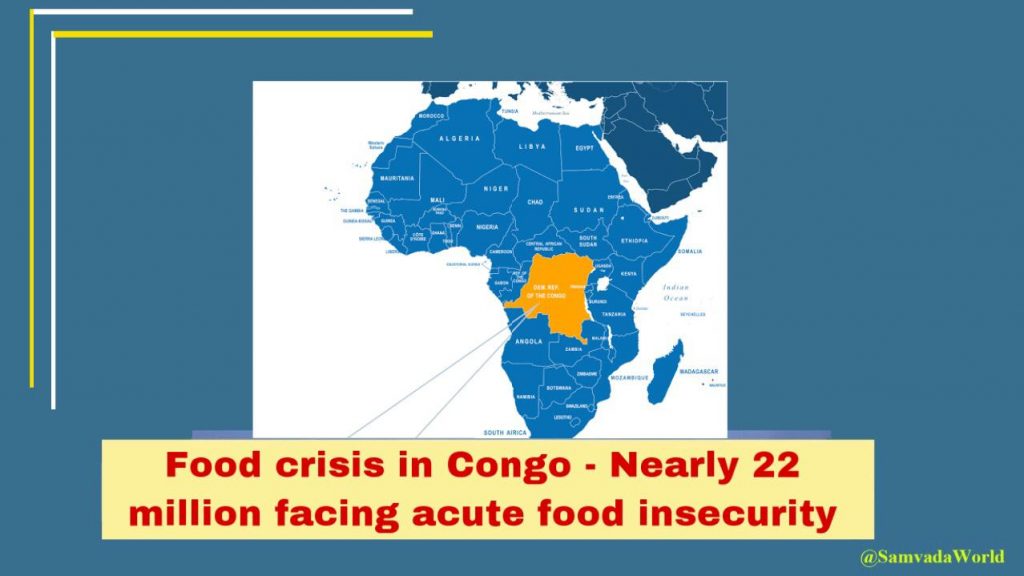Nearly 22 million people are facing acute food insecurity in the Democratic Republic of the Congo (DRC) as per the report released by the Food and Agriculture Organization (FAO) on 3rd Dec, Thursday. FAO is a UN agency.
The report says that “The number of people facing acute food insecurity at crisis or worse levels has dramatically increased – from 15.6 million in 2019 to 21.8 million”. The armed conflict in several regions of the country have contributed majorly to the food crisis observes the report. The situation was most dire in the provinces of North and South Kivu, lturi, and Kasai Central says FAO.
Apart from the ongoing conflicts which have already disrupted livelihoods, the COVID-19 pandemic and related containment measures, economic decline linked to currency depreciation and drop in GDP growth, and natural hazards are the main drivers of food crisis in the DRC, according to the report.
“These factors are exacerbating humanitarian needs and the country is now the world’s largest food crisis,” the FAO said. The report commenting on the loss of livelihoods during the lockdown restriction over COVID-19 pandemic observes that, “Movement restrictions linked to the COVID-19 pandemic have significantly impacted the food systems and livelihoods of smallholders and vulnerable populations, including in terms of accessing agricultural tools, seeds, markets and credit.”

The report said that internally displaced persons and people returning to their areas of origin face particular difficulty in accessing “productive assets” and often “find themselves without the means to resume their livelihood activities.”
FAO warned that “any further disruption of food supply chains will worsen human suffering and hamper efforts to tackle and reduce food insecurity” in the country. It said it was crucial for the DRC to provide “livelihood support to vulnerable populations … in order for them to produce their own food and income, and increase their self-sufficiency.”
FAO has said that forty-five countries, 34 of them in Africa, continue to be in need of external assistance for food, according to the quarterly Crop Prospects and Food Situation report, also published today by FAO’s Markets and Trade division.
The 45 countries in need of external assistance for food are: Afghanistan, Bangladesh, Burkina Faso, Burundi, Cabo Verde, Cameroon, Central African Republic, Chad, Congo, Democratic People’s Republic of Korea, Democratic Republic of Congo, Djibouti, Eritrea, Eswatini, Ethiopia, Guinea, Haiti, Iraq, Kenya, Lebanon, Lesotho, Liberia, Libya, Madagascar, Malawi, Mali, Mauritania, Mozambique, Myanmar, Namibia, Niger, Nigeria, Pakistan, Senegal, Sierra Leone, Somalia, South Sudan, Sudan, Syrian Arab Republic, United Republic of Tanzania, Uganda, Venezuela, Yemen, Zambia and Zimbabwe.
According to the Rome-based World Food Programme (WFP) 690 million people do not have enough to eat. while130 million additional people risk being pushed to the brink of starvation by the end of the year.
“Hunger is an outrage in a world of plenty. An empty stomach is a gaping hole in the heart of a society,” Secretary-General Antonio Guterres said last week pointing out that famine is looming in several countries.
